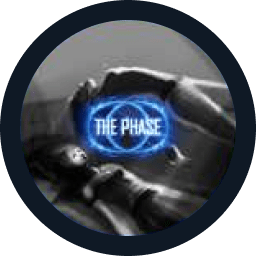There are three main methods for lucid dreaming: direct, indirect, and becoming aware within the dream. All of them are performed while lying down or semi-reclined with your eyes closed and without any muscle tension.
Fun fact!
People often don’t need to do anything special to find themselves out of their bodies—they don’t even need to know about or believe in out-of-body experiences. They can happen spontaneously, and there’s a ton of evidence to support this. What’s even more interesting is that often, to trigger such a spontaneous experience, it’s enough to read a few pages of a book on the subject, like this very guide.
Direct Methods for Lucid Dreaming
The direct method includes techniques performed without significant lapses in consciousness, though brief dozes lasting up to five minutes are acceptable.
Basically, you lie down and perform certain actions within a specific time frame, and you then enter a lucid dream. For 90% of people, these techniques are the most challenging because the brain is often too active at the start. Jumping straight into these methods is a big mistake, as proven by the students of the Out-of-Body Travel School. Not only might you get nowhere, but you may also miss out on discovering that this phenomenon is real. Much of the belief that phase states are extremely difficult comes from people who start with these tough techniques. It’s better to approach them only after mastering the indirect methods.
Indirect Methods of Lucid Dreaming
The indirect method involves techniques performed while you are awakening from sleep. Naturally, this means you need to sleep first before applying them, but the sleep doesn’t have to be long—that is, you don’t need a full night’s rest before attempting indirect techniques. Although indirect techniques can be used after a night’s sleep, they can also be used after a daytime nap lasting several hours, half an hour, or even less. The key is that before you take any actions, you lapse into sleep. These techniques are the most straightforward, so people often have their first experiences when using them. The main reason they’re more effective than direct methods is that sleep deeply relaxes the brain, making it easier to try these unusual experiments. It’s pretty hard to relax sufficiently on your own. Beginners especially should start with indirect methods to gain a belief in the existence of out-of-body sensations and find out what they are.
The Method of Becoming Lucid Within the Dream
This method involves techniques that let you enter a lucid dream by realizing you’re dreaming. In this case, the lucid dream starts when you are asleep and understand that everything around you is a dream. Then, there are several options for action, including immediately deepening the experience or returning to your body and rolling out of it. Using deepening techniques, the sensations of the surrounding space can even surpass reality. These techniques are usually considered separate from out-of-body travel methods, but in practice, the properties of these states and spaces are identical, and it’s all part of the phase. These practices are challenging because, unlike others, they don’t require specific actions that yield immediate results. Mastering methods for lucid dreaming through dream awareness can take a lot of time, but they’re not as hard to master as the direct method. Moreover, almost any practitioner starts regularly becoming aware in dreams as a side effect of their attempts to use direct and indirect techniques.
Every lucid dreamer finds a unique balance among all the methods of entering a lucid dream based on their ability to work with them, individual predispositions, and understanding of how to execute them. Some people stick to just one type of technique, most often the indirect method or becoming aware within the dream. However, when possible, it’s better to aim for balance and diversify your methods of lucid dreaming as much as possible, especially since, with experience, almost everything becomes easily accessible, and nothing is impossible in this pursuit. With a balanced approach and all options at one’s disposal, about 15% of experiences come from the direct method, 50% from the indirect method, and 35% from becoming aware within the dream. But sometimes the difference between these methods becomes so blurred that it’s hard to pinpoint which method led you into a lucid dream.
In addition to the techniques we’ve talked about, there are also non-autonomous technical aids and elements (e.g., various gadgets, programs, and external influences). But you should understand that these serve as aids only for those who can already enter lucid dreams without them. Otherwise, you get only random, one-off results.
Finally, note that using various chemical substances and herbal remedies hasn’t helped anyone and definitely does not produce the same effect you can achieve without them. Such approaches are categorically unacceptable in this practice.
Lucid Dreaming – Books by Authors-Practitioners
Recommended reading
Consciousness in a dream – The general principle of the technique
Lucid Dreaming and the Retention Technique
How to wake up out of sleep paralysis









